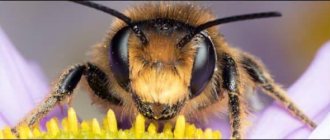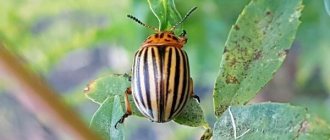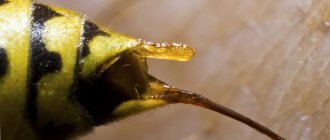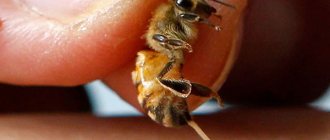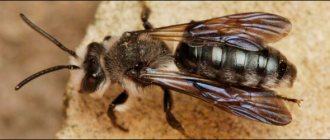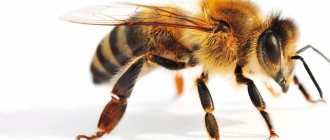Hardworking bees have been known to mankind since prehistoric times. Their ability to pollinate plants and produce honey has led humans to domesticate these beneficial insects. But not all types of bees bring only benefits. Today, more than twenty thousand species of bees are known to science. One of them is the carpenter bee. This species has more than 700 varieties; domestication of this species is not yet possible.
Origin of the species and description
Photo: Carpenter Bee
The taste of honey was familiar to primitive man. Along with hunting, ancient people also collected honey from wild bees. Of course, honey made up a small part of the diet of our distant ancestors, but it was the only source of natural sugar known in those days.
The appearance of honey bees is inextricably linked with the appearance of flowering plants on Earth. It is assumed that the first pollinators were beetles - insects even more ancient than bees. Since the first plants did not yet produce nectar, the beetles ate their pollen. With the advent of nectar, the evolutionary process of insects came to the stage of the appearance of the proboscis, then to its lengthening and the appearance of the honey crop - a container for absorbing nectar.
Video: Carpenter Bee
It was then that the higher hymenoptera appeared - the most ancient ancestors of modern honey bees. They swarmed, gradually mastering more and more new territories. They developed an instinct to return to flowers of the same species for pollination, and this was very important for the evolution of flowering plants. Over such a long period of existence, many varieties of bees have arisen, and currently scientists have systematized more than 20 thousand species of these insects.
One of the largest members of the honey bee family is the carpenter bee. Scientific name: Xylocopa valga. The insect owes its name “carpenter” to its own way of life, and in particular to the way it builds nests. With the help of powerful jaws, the bee gnaws tunnels in the wood, arranging nesting sites there.
The carpenter bee is twice the size of its closest cousins and does not have the characteristic yellow and black striped color. In addition, these insects do not swarm and are classified as solitary bees.
Peculiarities
The common carpenter bee is active from May to September, sometimes during warm autumns until October. Its diet is similar to that of a regular honey bee. This is plant pollen, for adult insects - honey and nectar. Xylocopa is a very hardy insect that can fly long distances. To prevent pollen from scattering, the bee moistens it with saliva, adds nectar, and carries it on the hairs of its limbs. Favorite plants for collecting pollen include fruit trees, willows and acacias, red clover and flowers of various types.
The violet xylocope's aggressiveness level is low. When meeting a person, there is a high probability that the insect will not react at all and will continue to move in the given direction.
If a bee stings a person, a painful swelling will form at the site of the bite. A bite to the throat is fatal.
If a bee stings a person
Due to the reduction in the amount of dead wood in forests and the destruction of this type of insect near human habitation, the carpenter bee is an endangered species and is listed in the Red Book.
The insect builds nests in dead tree trunks, old, and sometimes not so old, wooden buildings; For this special habit the bee was nicknamed the carpenter. The blue bee also has a sting, and in this regard it is in no way inferior to its striped relatives: if necessary, a xylocop can sting very painfully, much more painfully than its smaller relatives. If you are bitten, you should remove the sting from the wound, as well as the insect venom, and treat the damaged area with a bactericidal agent.
It is worth remembering that carpenter bee venom is quite toxic, and if the swelling around the sting does not go away for a long time, contact a specialist. A sharp allergic reaction to insect venom is also possible - characteristic symptoms will appear almost immediately after the bite. In such a situation, you cannot hesitate; it is better to immediately seek medical help.
Appearance and features
Photo: Insect bee carpenter
Appearance is what immediately distinguishes the carpenter bee from all other representatives of the species. Firstly, the insects are very large; females can reach 3-3.5 cm in length. Males are slightly smaller - 2-2.5 cm.
Secondly, the head, chest and abdomen of carpenter bees are completely black, shiny, no yellow-black stripes, like ordinary bees. Almost the entire body is covered with thin purple hairs. They are absent only on the abdomen. The wings are rather small compared to the body, transparent and as if dissected at the edges. Thanks to this structure, their blue-violet tint is very pronounced.
Interesting fact: it is because of the color of their wings that people divide carpenter bees into blue and purple. However, no other differences, with the exception of color, were identified in these two categories, so this division is considered not scientific, but philistine.
Females differ from males not only in size, but also in some other parameters. So, for example, females have a sting, longer antennae with red patches, protruding teeth can be seen on their hind legs, and the color of the villi covering the body is exclusively dark purple, while in males it can have a brown tint.
The eyes of carpenter bees have the same faceted structure as those of most insects. They are located on both sides of the head. In addition, there are three additional pinpoint eyes on the crown of the bee.
In order for the carpenter bee to cope well with its activity - gnawing wood - nature carefully endowed it with a durable skull with chitinous partitions and powerful jaws. And these, of course, are the main features that distinguish this type of insect from its closest relatives - ordinary honey bees.
Description
Carpenter bees, the photo of which is presented to your attention, belong to the order Hymenoptera and are considered the largest single insects of this species. They are also called xylocopes or purple bees, whose appearance resembles a bumblebee.
Their body length can reach three centimeters. The body of the insect, black with a metallic sheen, is covered with long hairs. The width of the head and chest is almost the same. The wings are black with a purple tint. The dark legs are heavily pubescent. Individuals of both sexes are very similar, but the females are larger and their antennae are black, while the males are reddish below.
Where does the carpenter bee live?
Photo: Common carpenter bee
Since their appearance on our planet, bees have mastered a fairly extensive geography. They left their parents' nests and rushed to new territories. Bounded to the north and east by the Himalayas and to the south by the ocean, ancient bees are thought to have headed west.
They first reached the Middle East and then began to occupy the territory of Egypt. The next stage of development was the northern coast of Africa, then the swarms reached the Atlantic and further to the Iberian Peninsula.
And they came to the territory of our country from Central Europe, spreading all the way to the Urals. The Ural Mountains turned out to be an insurmountable obstacle for honey bees. The climate of those places is very harsh, and the dark coniferous taiga did not allow the bees to count on an abundance of food. Honey bees failed to penetrate into Siberia and the Far East.
But this is all history and the natural distribution of the species. Of course, now the habitat of honey bees is much more extensive, and people have taken care of this. Along trade routes, sea and land, bees were brought to America and Mexico, and then to Australia and New Zealand.
For the carpenter bee, the main habitats are still Central and Western Europe and the Caucasus. As for Russia, here the species is distributed in the most comfortable living conditions. These are the Krasnodar Territory and Stavropol Territory, the Middle and Lower Volga, the Central Black Earth Region and other territories with a similar climate.
Reproduction
When a xylocopa builds a nest, it makes fairly deep tunnels in the wood, and then divides them into cells, using sawdust mixed with sticky saliva as a building material for partitions. The mother bee then fills each cell about one-third full with honey and lays her eggs on top of the nutrient bee. Then the insect closes its passage and flies away: this completes its parental duty, provided for by instinct.
The larvae develop in cells all summer. Eggs laid at the end of May are hatched by adult bees in the fall. Bees from later clutches fly out of their cells the following spring, having waited out the harsh winter in their cell-houses.
What does a carpenter bee eat?
Photo: Carpenter Bee Red Book
The diet of carpenter bees is practically no different from what ordinary bees eat:
- nectar;
- pollen;
- beebread;
- honey.
First of all, this is, of course, nectar and pollen of flower plants - the main food from spring to autumn. In addition, bees eat bee bread (also called bee bread) and their own honey. The most preferred treat for the carpenter bee is acacia and red clover pollen. But in general, they pollinate more than 60 species of honey plants.
If you take a closer look at the carpenter bee’s menu, you can identify several important components. So, for example, in order for the bee body as a whole to be strong and efficient, insects eat nectar and honey - generous natural sources of carbohydrates.
Pollen is the source of protein for bees. It helps keep their endocrine and muscular systems healthy. When collecting pollen, bees moisten it with saliva and nectar so that it gets wet, sticks together a little and does not crumble during long flights. At this moment, thanks to the secretion of the bee and the properties of the pollen itself, the process of pollen fermentation occurs, as a result of which beebread is formed.
Adult and young bees feed on beebread. They also use it to turn it into pulp and/or royal jelly, necessary for feeding the larvae, with the help of the secretion of the jaw glands.
Does a carpenter bee bite, and how dangerous is the bite?
Xylopes bite much more painfully than ordinary bees or wasps, and the consequences of their bites are much more dangerous for human health: together with the sting, the insects are injected into the wound, leaving painful swelling. The injected poison depresses the nervous system, provoking a state of shock. That is why it is extremely important to act quickly in such a case to reduce the likelihood of negative consequences.
Important! If such a bite lands on the throat, it can be fatal.
To do this you need:
- Carefully remove the sting from the wound without crushing it.
- Then squeeze out the poison from the bite site.
- Make a solution of ammonia in a ratio of 1:5 with water, moisten gauze in it and apply it to the wound, after which the wound can be bandaged.
Features of character and lifestyle
Photo: Carpenter Bee
Despite its impressive size compared to its closest relatives, the carpenter bee does not pose a threat to any creature in nature. These insects are absolutely not aggressive. Of course, the female carpenter can use her only weapon - a sting, but she does this exclusively for self-defense or in case of real danger to her life.
However, the amount of venom injected into a carpenter bee sting is quite large and causes widespread, painful swelling. But if you don’t try to attack the bee’s home and don’t tease her, then she most likely won’t even pay attention to anyone’s presence. She already has enough worries.
All bees are hard workers by nature, but the carpenter bee is a true workaholic. True to its nickname, it makes deep tunnels in old and rotten wood. It can be anything - outbuildings, all types of rotten boards and logs, dead wood, stumps, old trees. Soft wood easily yields to the pressure of powerful bee jaws, and multi-level dwellings appear inside it, in which the larvae will then live and develop.
Interesting fact: the carpenter bee prefers only natural wood. If the surface is painted or treated with protective and decorative compounds, these gourmets will not be interested in it.
The process of gnawing out a tunnel is quite noisy; the bee makes a sound similar to the buzzing of a miniature circular saw. This sound can be heard several meters away. As a result of the efforts made by the carpenter bee, a perfectly round entrance to the nest and internal multi-level passages up to 30 cm deep are formed.
The carpenter bee is not a swarming bee. These are solitary insects. Each female organizes her own colony. Bee activity lasts from May to September, and under favorable weather conditions – until October.
How to get rid
So, the carpenter bee itself is harmless, but only if it is far from populated areas. Otherwise, the insect becomes dangerous to humans: it makes a nest in a residential wooden house or destroys agricultural buildings.
As has already been said, these bees bite painfully, and if you suddenly do not notice your new neighbor in time (even despite her impressive, albeit for an insect, size), then you risk suffering both physical and material damage: a painful bite and pretty much eaten walls.
How to remove xylocopa?
For this, various methods are used, more or less effective:
- Pesticides against wasps and other large Hymenoptera. They can be in the form of powders, aerosols, gels, and so on. It is impossible to say which one is optimal: all of these remedies have their advantages and are effective when used correctly. In particular, agents such as carbaryl (Sevin) and boric acid are effective.
- Gasoline . It is very toxic and will undoubtedly kill bees and their larvae if poured into xylocope tunnels. But you should be extremely careful with this substance: firstly, it is flammable, and secondly, the human body’s reaction to gasoline is not much different from that of insects. So take care to protect your skin from getting gasoline on it, and your lungs from inhaling its toxic fumes. It is best to use a spray bottle.
- Finally, there are more humane (relatively) methods of dealing with carpenter bees: You can scare them away with loud noise , which they cannot stand (using a music center near their nest, turned on at full volume). The bravest ones can use a tennis racket and swat a couple of pests, striking fear into the hearts of others (bees, by the way, have no hearts).
Social structure and reproduction
Photo: Insect bee carpenter
Unlike ordinary honey bees, the carpenter bee family is not divided into queens, workers and drones. There are only females and males here. But, like all insects of this species, absolute matriarchy reigns among carpenters. This hierarchy is due to the fact that the main work of creating a colony, feeding and raising larvae falls on the female.
Males are not so hard-working, and their function is mainly to fertilize females. During the breeding season, males are very actively attracted to them. Seeing a suitable bee, the male takes a position on some hill and buzzes loudly, trying to attract her attention.
If the female does not show proper activity and does not leave the nest, then the gentleman himself descends into her hiding place and continues “courtship” until the chosen one reciprocates his feelings. Males are polygamous, each of them guards his own small “harem”, which is inhabited by 5-6 females.
When setting up a nesting site, the female places pollen at the bottom of the tunnel and moistens it with nectar and her own saliva. She lays an egg in the resulting nutrient mixture. From the sawdust left after gnawing the tunnel and glued with saliva, the bee creates a partition, thereby sealing the cell with the future larva located in it.
The nutritious nectar mixture is again laid on the formed partition, another egg is laid and the next cell is sealed. Thus, the bee fills the entire tunnel and moves on to a new one. As a result, the carpenter bee's nest acquires a multi-story and branched structure.
Interesting fact: the homes of carpenter bees can rightfully be called “family nests”, since they can be used by many generations of individuals.
Having laid her eggs, the female watches and guards the nesting site for some time. Most often, adult females die during the winter cold, but if they manage to survive the winter, then next spring they begin a new cycle of breeding.
The larvae grow and develop independently. By the end of summer they pupate, and by the beginning of winter the cells are inhabited by young bees, who are forced to remain locked up until they gain enough strength.
In the spring, fully grown, strong individuals gnaw their way to freedom and rush in search of nectar. Their independent life begins, they begin to build their own nests and breed new colonies.
Life cycle and reproductive characteristics of the carpenter bee
The big black bee prefers a solitary existence. It is impossible to meet a family of tree bees; they do not swarm, unlike other species. Females independently create separate nests for their offspring. Carpenters choose dead wood for living. With the help of a strong chewing jaw, the female gnaws a tunnel in which she settles.
Male tree bees die after mating with a female.
Carpenters' housing resembles high-rise buildings. The insect builds a separate tunnel for its eggs. The eggs are laid in cells, at the bottom of which there is pollen and nectar for food. Work on the nest, including protecting it from unwanted guests, is carried out by the mother until October. In October, the life cycle of the uterus ends.
The lifespan of a black bee, from pupation to natural death, is 14 months, the life of a young hatched bee is 6 months. The eggs pupate in August, and the young emerge later and survive the winter thanks to stored pollen. In May, the young leave the nest to build their own.
The home of a tree bee is a kind of fortress in which dozens of generations can change.
Natural enemies of carpenter bees
Photo: Common carpenter bee
Thanks to their impressive size and durable wooden homes, carpenter bees have far fewer enemies in the wild than regular honey bees. First of all, these are, of course, insectivorous birds - bee-eater, shrike, golden bee-eater and many others.
Danger awaits carpenter bees in the habitats of frogs. They feed on different types of insects, but do not mind eating a bee, grabbing it in flight with their long sticky tongue. Another predatory representative of lovers of these insects is the spider. It weaves its web in the immediate vicinity of bee nests and catches unwary bees with it.
No less dangerous for carpenter bees are their distant relatives such as hornets. They are twice as large, very voracious and can destroy bees in large numbers for their own food.
Another natural, although not the most dangerous, enemy of the carpenter bee is dragonflies. They do not always attack, especially against such large representatives of bees. They prefer easier prey. However, in those years when dragonflies breed too actively, there is not enough food, and carpenter bees end up in their diet along with other insects.
And in the immediate vicinity of the surface of the earth, carpenter bees lie in wait for mice and other insectivorous rodents. Most of them are not able to reach the nests of carpenter bees and destroy them, as they do with the hives of ordinary honey bees, but adults quite often end up with these small predators for lunch. Since carpenter bees are not tamed or domesticated by humans, they do not have to wait for help in the fight against natural enemies.
Other types of carpenters
The diversity of this carpenter bee is amazing. Apiologists count more than 7 hundred species of such insects living in different parts of the planet. So, in the USA, for example, the American subspecies is widespread, distinguished by its completely black color, much larger size and aggressiveness towards humans. They fly out to collect pollen twice, in the morning and at nightfall.
German carpenter bees live in Europe. Their peculiarity is their stable immunity to almost all diseases.
The most dangerous species of these insects lives in North Africa (Tunisia, Algeria). Very aggressive towards humans. When the insect bites, it smears the victim with propolis.
Sometimes bumblebees are also classified as carpenter bees. But this is rather a mistake, because the peculiarity of a carpenter is to live exclusively in wood, but a bumblebee can settle down not only in it.
In general, the carpenter bee does not cause problems for humans, being an important pollinator, but if such bees become your neighbors, then there is nothing good about it. At a minimum, they will riddled all the wood components of your home with holes and tunnels. In addition, woodpeckers love carpenter bees, instantly flying in and delivering another blow to woody structures.
Who are tinder bees and why are they dangerous?
Population and species status
Photo: Insect bee carpenter
Despite the fact that the importance of the presence of bees in the wild is difficult to overestimate, their populations are constantly and steadily decreasing.
There are several reasons for this:
- increasing the amount of farmland;
- treatment of flowering plants with insecticides;
- illness;
- harmful mutations resulting from crossing.
Factors such as the increase in farmland and the cultivation of monocultures on it can be considered the main factor in the decline in carpenter bee populations. In natural conditions - in meadows and forests - plants with different flowering periods live. Some bloom in early spring, others in summer, and others in autumn. A crop is planted in the fields, the flowering of which lasts no longer than a month. The rest of the time, the bees simply have nothing to eat and die.
In addition, cultivated plants attract large numbers of rodents. In the fight against them, people use many chemicals to help preserve the harvest. Bees, when pollinating plants treated with chemicals, receive a significant and sometimes fatal dose of poison.
Carpenter bees are not immune to disease either. Larvae, pupae and adults are attacked by parasites (mites) and acquire a severe disease - varratosis. One tick can kill dozens of individuals.
Speaking about the decline in the population of carpenter bees, one cannot fail to mention human activity in the process of crossing species. The results of such actions are extended over time, but scientists have already established facts of the accumulation of harmful mutations among breeding breeds. Such bees become susceptible to various diseases, the seemingly familiar climate does not suit them, and the colonies simply die out.
How to deal with carpenter bees
Xylopes are rare insects that are on the verge of destruction, so even if they have settled near human habitation, threatening the health of adults and children, it is strongly not recommended to destroy them. Instead, you can try other methods of getting rid of unwanted neighbors.
Did you know? Xylope has high immunity, due to which it does not become infected with bee mites, from which other bee species suffer.
In the house
If carpenters have settled in a living space, then getting rid of them will not be difficult. The first step is to try to drive out the bees with noise. They really don’t like it, so if you turn on music with good bass next to their nest, the insects themselves will leave the home as soon as possible. In the second case, boric acid or powdered pesticides come to the rescue, which are used to destroy wasp nests.
Some experienced beekeepers claim that tree bee traps also work well in such situations.
In the barn
If carpenters have settled in a non-residential building, the easiest way to get rid of them is with liquid fuel or aerosol cleaners designed for carburetors. They simply fill the passages in the insect nest. Thus, there is a risk of destroying an entire generation, but the rest will not create inconvenience in the future.
Find out more about how to get rid of neighbor or wild bees.
The carpenter bee is a valuable breed of honey bee, and if beekeepers managed to tame it, this would be beneficial for the species itself in the first place, since it would help preserve its population. Until this happens, specialists can only study the characteristics of these insects and try to preserve them in the wild.
Interesting Facts
Beekeepers around the world continue to try to tame the carpenter bee and turn it into an ordinary bee that brings honey. If this happens, beekeepers around the world will have a unique type of bee that will be virtually invulnerable.
But all attempts have not yet brought results: the bee develops and actively lives exclusively in its natural habitat. This species is also valuable because it is able to work actively even in bad, inclement weather. Neither rain nor wind can stop the carpenter bee from covering vast distances and obtaining pollen.
The bee has a reputation as a "loner". This is not entirely true. Despite the fact that each lives separately, each still maintains contact with the other bees. This is due to the reproductive instinct. As a rule, five to six females live in one territory and one male, who guards his territory.
When a new female appears in his zone, the male rises as high as possible and begins to make a loud sound, attracting the attention of the newcomer. If a strong buzzing has no effect, the male is able to climb into her nest and come back out
He does this as many times as it takes for the chosen one to pay attention to him.
If you find this bee within your home, you should take the necessary measures. But first, it’s worth clarifying whether the carpenter bee is included in the Red Book or not. The latest data from scientists suggests that the population of these unique individuals is rapidly declining.
To find the habitat of bees, it is worth remembering a few facts:
- the favorite habitat is dried soft wood;
- to build a nest, the insect chooses exclusively natural materials, so you should not look for the insect, for example, in furniture treated with paints and varnishes;
- monitor the movements of the bee in the spring, when young insects are looking for a place to build their own nest.
If detected, there is no need to completely eliminate insects. It is enough to “drive” them out of their homes using gasoline, agricultural poisons or ordinary water. You can also tightly wall up all the holes in the nest. Another interesting way is to treat the nest and nearby surfaces with citrus extracts.
Lemon, bergamot, lime, orange are suitable. Be careful when using chemicals. Use protective equipment. They will protect against chemicals and unexpected attacks by an angry bee.
Hardworking insects that pollinate plants and create sweet and healthy products have been known since prehistoric times. Acquaintance with bees began long before their domestication. Currently, entomologists identify more than 20 thousand species, among which there are very interesting specimens. Particularly notable is the carpenter bee - a bee of rare beauty and strength, capable of gnawing nests in wood.
Bees in the wall of the house
Tree bees most often set up their homes within the walls of a house. It is very difficult to drive away these insects. Therefore, it is strongly recommended to follow the recommendations of those who have previously encountered a similar problem.
Useful tips
Before looking for the answer to the question of how to get rid of bees in the wall of a wooden house, you should make sure that we are talking about these insects, and not about wasps or hornets. Methods of dealing with them differ significantly.
You should start looking for a way to effectively smoke bees out of the wall of your house at the end of the winter season. During this period it will be easier to do this, since the size of the colony is minimal.
Bees in the wall of the house
Important! When the nest is located directly inside the wall, sealing the entrance will not solve the problem, but will create new problems. When starting activities to expel bees, you should take a number of self-defense measures:
When starting activities to expel bees, you should take a number of self-defense measures:
- do not smoke near the hive;
- do not drink alcohol;
- do not use perfumery products with pronounced odors (it is better to avoid perfume and cologne altogether);
- wear thick, light-colored clothing;
- put a protective net on your head;
- put gloves on your hands.
If ordinary bees build hives in secluded places and various wall recesses, removing the bees will not be difficult. It is enough in the evening (when the insects are inside the hive) to remove the hive, pack it in a tight bag and throw it away (it is better to burn it).
Head protection net
It will be much more difficult to get rid of the so-called tree bees. These insects got their name because they make honeycombs of their tenant directly in dead wood, where they cut complex multi-level nests with a huge number of cells, in each of which a larva will then develop.
When planning to get rid of these insects, it will be useful to know a few significant facts about them:
- Only female tree bees sting, their sting can be dangerous to health - in fact, you should definitely seek help from a doctor;
- bees should be disposed of immediately when they are discovered, otherwise the wooden house will suffer significant damage due to the violation of the integrity of the massif;
- Wood bees have an excellent reproductive system (one mature female can reproduce 6 thousand larvae during the warm period).
Effective methods
When it comes to wood bees living in the walls of houses, standard methods do not work. There are several methods that can help eradicate insects from home walls.
Play loud music with high-quality bass
Practice has shown that the best option for removing bees from the walls of a wooden house is associated with sound vibrations. The tree bee is incredibly sensitive to noise. In some cases, in order for the insects to fly away and never return, it is enough to turn on loud music with high-quality bass in the immediate vicinity of their place of residence.
If the described action does not have an effect, you can hang sticky traps for flying insects. This method will be effective only for single fishing.
You can resort to “heavy artillery”. Injecting gasoline or carburetor cleaner into the hive is guaranteed to get rid of insects.
Important! When getting rid of bees using flammable substances, you should carefully follow all fire safety rules, since we are talking about processing highly flammable wood. As a more fire-safe option, you can try to fight bees with boric acid, carbaryl or other special pesticides
As a more fire-safe option, you can try to fight bees with boric acid, carbaryl or other special pesticides.
How to get rid of wood bees in the wall of a wooden house using a gentle method
Few disinfection services will deal with black bees, as it is illegal. Therefore, the question of how to get rid of tree bees on your own becomes especially relevant. Given the circumstances, the only way to get rid of insects is through sound vibrations.
The woodcutter bee is very sensitive to noise. It is enough to turn on loud music near the proposed housing. Preferably a composition with low frequencies - high-quality bass. Blue bees will leave their wooden home on their own.
Drive away bees with low-frequency music
There is a more aggressive, but effective method.
Remedy for blue bees
How to deal with tree bees if noise does not help?
The easiest way to protect your home from these insects is with sticky traps for flying insects. But it is effective for single catching.
In addition to this, there are other means:
- If the pests are very annoying and pose a real danger to the health of the household, you can sacrifice one generation of them to ensure that they are not in the old holes forever. To do this, you need to fill the entire socket through the main passage with an aerosol carburetor cleaner or ordinary gasoline. At the same time, it is worth remembering safety measures with such toxic substances, especially when it comes to working with wood.
- Special pesticides, especially powder ones, are quite effective in destroying homes. The most commonly used are boric acid or carbaryl.
Important! The individuals themselves are not aggressive. If the carpenter wasp does not feel a threat to its life and the integrity of the “house”, it will not attack.

